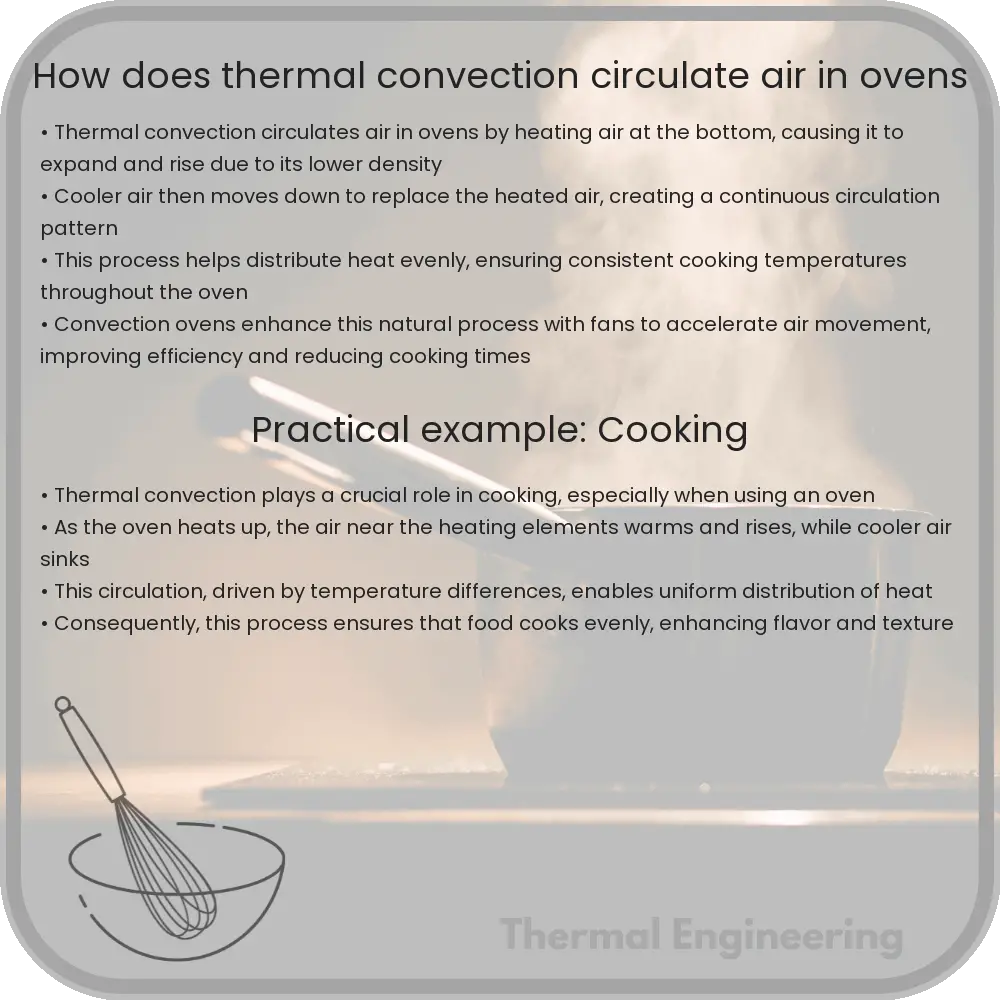Learn how thermal convection works in ovens to evenly cook food through air circulation, enhancing cooking efficiency and uniformity.

Understanding Thermal Convection in Ovens
Have you ever wondered how an oven evenly cooks food? The secret lies in a process called thermal convection. This involves the movement of heat through air, efficiently distributing temperature within the oven’s chamber. But how exactly does this process work? This article will simplify the principles of thermal convection and explain its role in the operation of ovens.
What is Thermal Convection?
Thermal convection is a heat transfer process in which heat moves through a fluid (which can be a liquid or gas) due to the fluid’s movement caused by changes in its density. In the context of ovens, the fluid is the air inside the oven chamber. When air is heated, it expands and becomes less dense and lighter than the cooler air around it. This density difference causes the warmer, lighter air to rise and the cooler, denser air to sink. This cycle of rising and falling air currents results in a continuous circulation pattern known as a convection current.
How Convection Circulates Air in Ovens
In an oven, convection begins when the heating element, usually found at the bottom, heats the air directly above it. As this air warms up, it expands and rises to the top of the oven because it becomes lighter than the surrounding cooler air. Upon reaching the top, the air begins to cool and contract, becoming denser and sinking back towards the bottom of the oven.
Modern ovens often include a fan to enhance this natural convection process. The fan speeds up the circulation of the air, spreading the heat more rapidly and evenly throughout the oven. This is why convection ovens are particularly effective at achieving uniform cooking temperatures and reducing cook times.
Benefits of Convection in Ovens
- Uniform Cooking: Convection ensures that hot air circulates throughout the oven, eliminating hot spots and ensuring that food cooks evenly.
- Faster Cooking Times: Enhanced air circulation efficiently transfers heat to the food, often reducing cooking times.
- Energy Efficiency: Due to reduced cooking times and even temperature distribution, convection ovens tend to be more energy-efficient than traditional ovens.
In summary, thermal convection plays a crucial role in the functioning of ovens, leveraging the natural tendency of hot air to rise and cool air to fall, thus creating a consistent and efficient heating environment. Whether you are baking a cake or roasting a turkey, understanding this process can help you optimize your oven settings for the best results.
With this knowledge, you’re better equipped to use your oven more effectively, ensuring that your culinary creations are not only delicious but perfectly cooked every time.